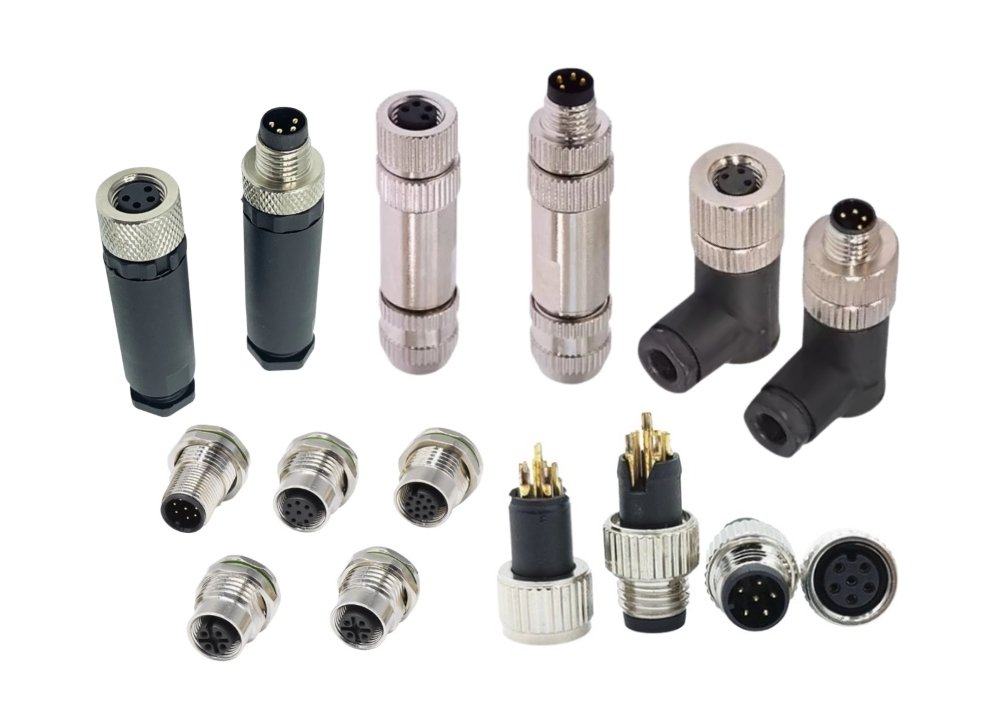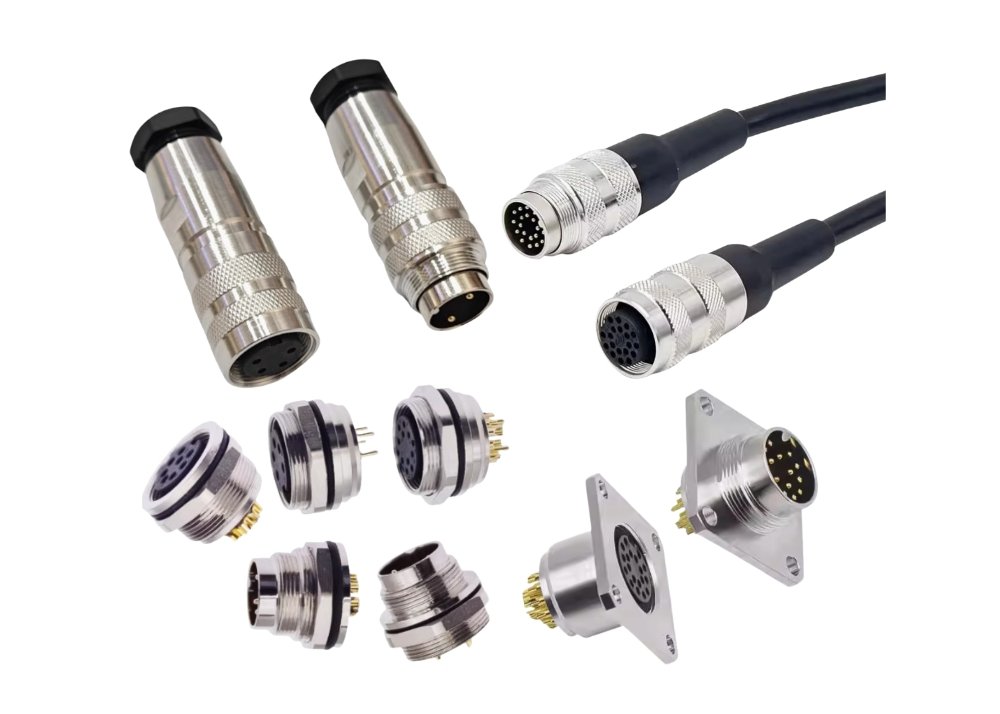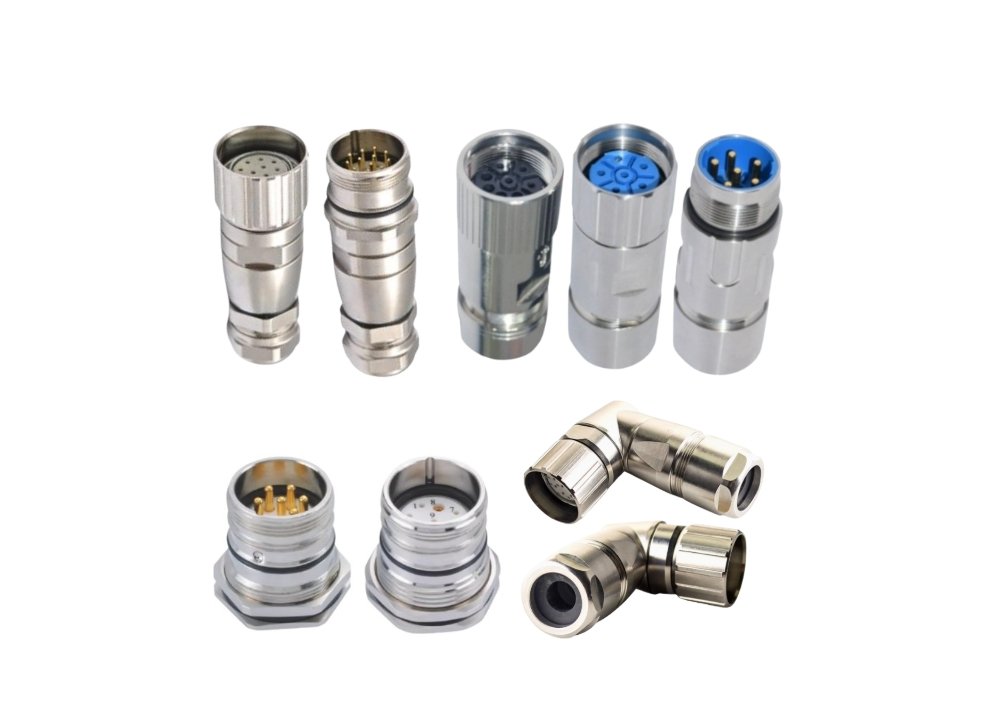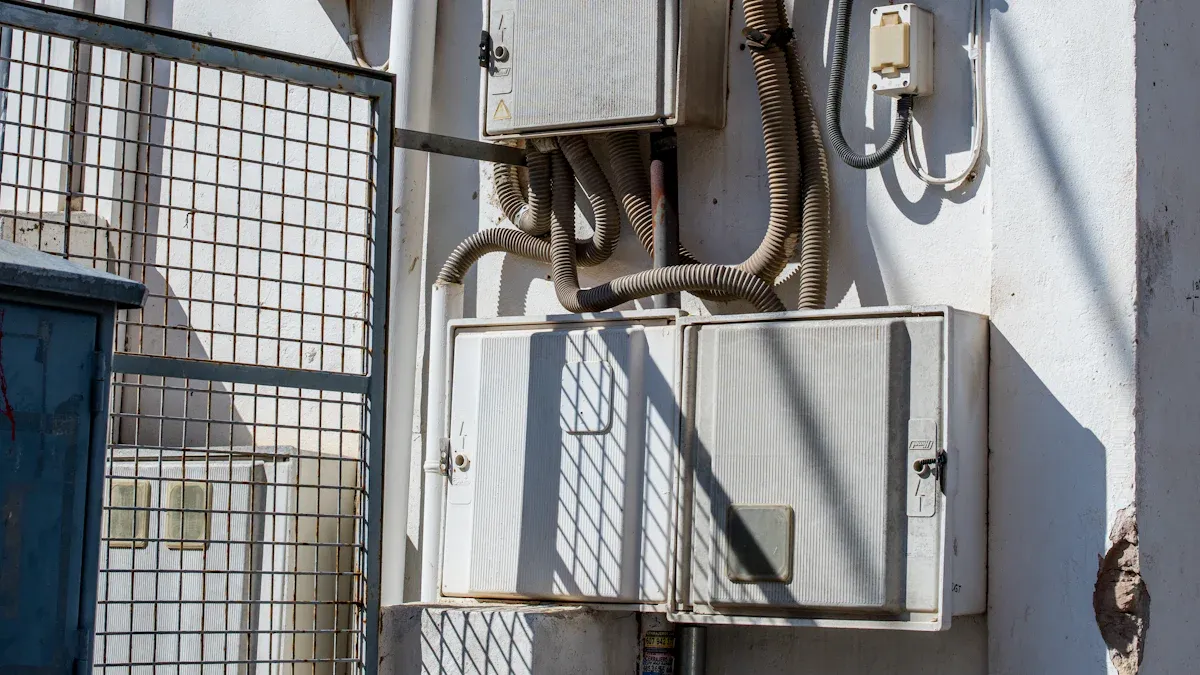
You ensure electrical safety when you choose waterproof wire connectors for your installations. Moisture often causes corrosion, which weakens the connector and leads to poor contact reliability or even total connector failure. The risks increase in environments where water exposure is common, such as outdoor setups or industrial sites. The following table highlights the most common issues:
| Consequence | Description |
|---|---|
| Corrosion | Materials degrade when exposed to moisture, compromising the connector’s integrity. |
| Poor Contact Reliability | Intermittent connections disrupt performance and reliability. |
| Connector Failure | Prolonged moisture can cause complete breakdown of the connector. |
Selecting products like the M8 connector or Type B connector from an experienced connector factory helps you protect people and property.
The Dangers of Moisture for Wire Connectors
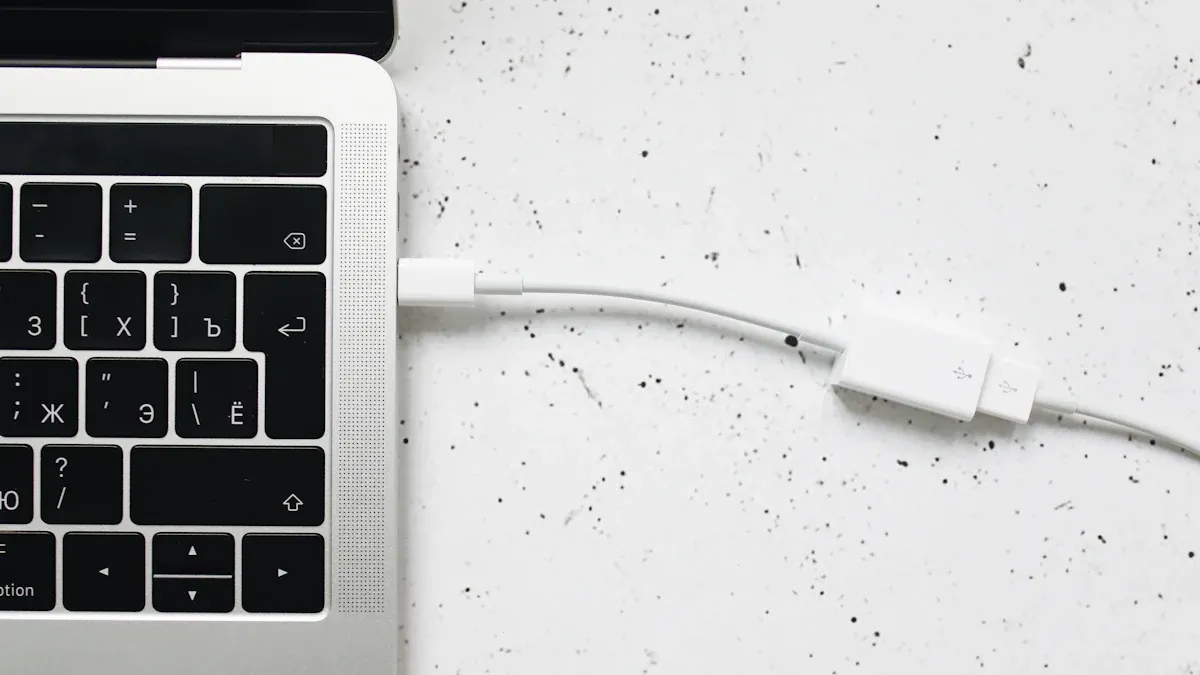
Electrical Hazards from Water Exposure
Short Circuits and Fire Risks
You face significant risks when water enters electrical connectors. Water can create unintended paths for electricity, causing short circuits. These short circuits often lead to overheating and, in severe cases, fires. In the United States, water damage to electrical wiring contributed to over 32,000 home fires between 2015 and 2019. Leaking pipes or flooding can quickly turn a safe environment into a hazardous one. Outlets, switches, and circuit breaker panels are especially vulnerable to water exposure, increasing the likelihood of dangerous incidents.
⚠️ Tip: Always inspect areas prone to leaks or flooding before installing wire connectors. Early detection of moisture can prevent costly damage.
Corrosion and Connection Failure
Moisture does not just cause immediate hazards. Over time, it leads to corrosion of the metal parts inside electrical connectors. Corroded connectors lose their ability to maintain strong, reliable connections. This degradation can result in intermittent power, overheating, or even total failure of the connector. You may notice flickering lights or malfunctioning equipment as early warning signs. Corrosion also increases the risk of conductive residue forming, which can further compromise the safety and performance of your electrical system.
Equipment Malfunction and Downtime
When moisture infiltrates electrical connectors, equipment reliability drops. In industrial settings, even minor moisture intrusion can disrupt operations. You might experience:
- Corrosion of sensitive components, leading to equipment failures.
- Increased risk of unplanned outages due to moisture-related issues.
- Emergency maintenance and costly downtime triggered by connector failures.
Moisture contamination in lubricants can also cause wear and breakdown of lubrication, further affecting equipment performance. These issues not only interrupt workflow but also increase maintenance costs and reduce the lifespan of your equipment.
Real-World Consequences of Moisture Intrusion
Residential Electrical Hazards
In your home, moisture intrusion can have severe consequences. Fire hazards often arise from unnoticed water damage, especially when insulation around wires becomes compromised. Many electrical fires, often attributed to unknown causes, actually result from previous water exposure—sometimes from seasonal rains or plumbing leaks. Short circuits caused by water contact with live wiring can lead to power surges, damaging appliances and electronics. Ground faults from water damage create dangerous paths for electricity, increasing the risk of electrocution and fire.
Commercial and Industrial Risks
Moisture poses unique risks in commercial and industrial environments. The following table highlights some of the most common threats:
| Risk Type | Description |
|---|---|
| Corrosion | Moisture can corrode the conductor and shields, weakening the integrity of electrical connectors. |
| Signal Reflection | Changes in the dielectric constant due to moisture increase signal reflection, causing unreliable system performance. |
| System Failures | Moisture-related issues have caused failures in critical systems, such as air traffic management transponders. |
You must address these risks proactively. Corrosion of electrical connectors can lead to decreased functionality and increased risk of electrical failures or fires. Signal reflection disrupts communication systems, while system failures can halt essential operations. Even minor moisture intrusion can trigger emergency maintenance and unplanned outages, resulting in significant operational disruptions.
How Waterproof Wire Connectors Prevent Electrical Hazards
Waterproof wire connectors play a crucial role in protecting your electrical systems from moisture-related dangers. You can rely on these connectors to maintain safe, reliable connections even in the harshest environments. Their design features and material choices directly address the risks posed by water, dust, and chemicals.
Sealing Mechanisms in Waterproof Electrical Connectors
Gaskets and O-Rings
You benefit from advanced sealing mechanisms in waterproof connectors. Manufacturers use rubber and silicone for their excellent electrical insulation and sealing properties. These materials form the backbone of gaskets and O-rings, which create a tight barrier against water ingress. Many industrial electrical connectors feature compressed gaskets or rubber O-rings that seal the connection point. Some underwater connectors even use triple redundant O-ring barriers with different hardness levels to maximize waterproof integrity. This approach ensures that your connections remain dry and functional, even when submerged or exposed to heavy rain.
- Rubber and silicone provide reliable insulation and sealing.
- O-rings and gaskets compress to block water entry.
- Some connectors use multiple O-rings for added protection.
💡 Tip: Always check that the O-rings and gaskets are properly seated before completing your installation. A misaligned seal can compromise the waterproof barrier.
Tight-Fitting Enclosures
You also gain protection from tight-fitting enclosures in waterproof wire connector designs. These enclosures clamp down on the cable entry points, preventing water from seeping inside. Many connectors use grommets or potting compounds to fill any gaps and further enhance the seal. This robust construction ensures that your electrical connectors resist moisture, dust, and other contaminants. You can trust these enclosures to maintain the integrity of your connections in wet or submerged environments.
Material Choices for Durability
Corrosion-Resistant Plastics and Metals
You need durable materials to ensure long-lasting performance in your waterproof connectors. Manufacturers select high-grade plastics, stainless steel, aluminum, and thermoplastic elastomers for their resistance to corrosion and environmental stress. These materials protect your connectors from rust, degradation, and mechanical wear.
| Material Type | Properties |
|---|---|
| High-grade plastics | Resistant to UV radiation and extreme temperatures |
| Stainless steel | Corrosion-resistant, ideal for heavy-duty applications |
| Aluminum | Lightweight and resistant to environmental stressors |
| Thermoplastic elastomers | Highly resistant to environmental stressors |
You can count on these materials to maintain the durability of your waterproof wire connector, even in challenging outdoor or industrial settings.
UV and Chemical Resistance
You face additional threats from sunlight and chemicals in many environments. Modern waterproof connectors use UV and chemical-resistant materials to protect against these hazards. These materials prevent water ingress and extend the lifespan of your connectors. Plastic variations offer lightweight, cost-effective solutions that resist many chemicals. This resistance is crucial for maintaining the integrity of your electrical connectors in harsh or unpredictable conditions.
- UV-resistant materials prevent degradation from sunlight.
- Chemical-resistant plastics and metals withstand exposure to oils, solvents, and cleaning agents.
- Enhanced material choices help your connectors last longer in demanding environments.
Understanding IP Ratings for Waterproof Connectors
What IP Ratings Indicate
You should always check the IP (Ingress Protection) rating when selecting electrical connectors for wet or dusty environments. The IP rating, defined by the IEC 60529 standard, uses two numbers: the first indicates protection against solids, and the second shows protection against liquids. For example, a connector with a high IP rating offers superior defense against both dust and water. In industrial applications, fully-sealed connectors are necessary to withstand high-pressure water and moisture. Keep in mind that some connectors may lose their waterproof capabilities when a plug is inserted, so look for designs with additional sealing at the connection point.
- The first digit in the IP rating = protection against solids (like dust).
- The second digit = protection against liquids (like water).
- High IP ratings mean better protection for your electrical connectors.
Selecting the Right IP Level
You must choose the correct IP rating for your application to ensure safety and reliability. For outdoor and industrial environments, IP67 and IP68 are the most recommended levels.
| IP Rating | Description |
|---|---|
| IP67 | Dust-tight and protected against immersion in water up to 1 meter for a limited time. |
| IP68 | Dust-tight and protected against continuous immersion in water beyond 1 meter, under specified conditions. |
IP67 serves as the baseline for harsh environments, providing full dust protection and limited water immersion. IP68 offers enhanced resistance, making it suitable for continuous submersion. You should always match the IP rating to your specific needs to guarantee the safety of your wire connectors.
🛡️ Note: Selecting a waterproof wire connector with a high IP rating ensures your connections stay protected, even during unexpected exposure to water or dust.
Where Waterproof Wire Connectors Are Needed Most
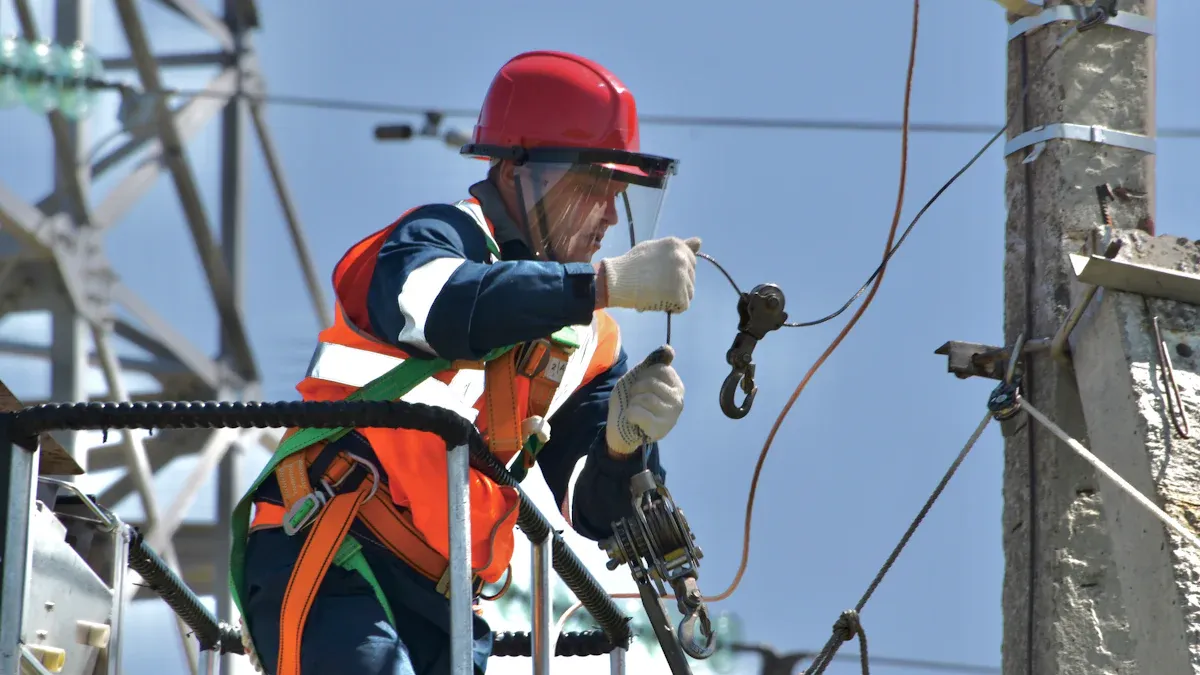
Outdoor Electrical Installations
Landscape Lighting and Irrigation
You often install electrical connectors in landscape lighting and irrigation systems. These outdoor and specialty environments expose your connections to rain, humidity, and soil moisture. When you use non-waterproof connectors, you increase the risk of moisture ingress. This leads to corrosion of metal connections, overheating from increased resistance, and even potential fire hazards. You may face costly repairs and safety risks from faulty connections.
- Increased susceptibility to moisture ingress
- Corrosion of metal connections
- Overheating and fire hazards
- Costly repairs due to connection failures
- Safety risks from faulty connections
Waterproof wire connectors protect electrical connections from water damage. You minimize the risk of short circuits and reduce equipment malfunction. This approach establishes a more reliable electrical system for your outdoor lighting and irrigation.
Exterior Outlets and Fixtures
You rely on electrical connectors for exterior outlets and fixtures. Weatherproof designs shield your connections from rain, snow, and dust. You prevent corrosion and maintain safe, uninterrupted power for outdoor appliances, security cameras, and decorative lighting. You ensure that your electrical connectors withstand harsh conditions and deliver consistent performance.
Marine and Boating Applications
Saltwater and Freshwater Exposure
You encounter harsh environmental conditions in marine applications. Saltwater exposure accelerates corrosion and damages electrical connectors. You must select robust, water-sealed connectors to prevent water ingress and maintain reliable connections. Underwater connectors face high pressure, saltwater ingress, and extreme temperatures. Advanced designs help you achieve long-term reliability in these outdoor and specialty environments.
- Marine applications are highly susceptible to saltwater exposure
- Connectors must be robust and water-sealed
- Underwater connectors require advanced designs for reliability
Onboard Electrical Systems
You depend on electrical connectors for onboard systems, including navigation, lighting, and communication. Waterproof wire connectors ensure that your connections remain secure, even when exposed to splashes or submersion. You avoid unexpected failures and maintain the safety of your vessel.
Industrial and Commercial Environments
Factories, Warehouses, and Processing Plants
You operate in demanding settings where dust, moisture, and chemicals threaten electrical connectors. Waterproof designs protect your connections from corrosion and equipment failure. You maintain reliable electrical systems and reduce downtime in factories, warehouses, and processing plants.
| Industry/Application | Description |
|---|---|
| Marine Technology | High demand due to risks from saltwater vapor and submersion. |
| Offshore Oil Exploration | Requires waterproof connectors for harsh environmental conditions. |
| Data Communication Installations | Essential for reliable connections in outdoor and wet environments. |
| Transportation | Used in vehicles exposed to various weather conditions. |
| Military Equipment | Needs robust connectors to withstand extreme conditions. |
Agricultural and Greenhouse Settings
You face constant moisture in agricultural and greenhouse environments. Waterproof wire connectors prevent failures in grow lights, environmental controls, and irrigation systems. You reduce risks of short circuits and electrocution, protecting personnel and crops.
- Prevents moisture-related failures
- Reduces risks of short circuits and electrocution
You ensure uninterrupted power delivery to critical systems. You minimize downtime and maintenance costs. You protect valuable crops and infrastructure from electrical hazards.
Automotive, RV, and Trailer Wiring
Under-the-Hood Connections
You face some of the harshest conditions under the hood of your vehicle. Heat, vibration, oil, and constant exposure to moisture can quickly degrade standard electrical connectors. When you use waterproof electrical connectors, you protect critical systems from these threats. Engine compartments demand robust solutions because even a small amount of water or dirt can cause a failure. You rely on these connectors to keep your headlights, taillights, and ignition systems working reliably.
- Waterproof connectors prevent moisture and dirt from entering electrical connections.
- They perform best in harsh environments like engine compartments and undercarriages.
- You find them essential for headlights, taillights, and other critical components.
You benefit from the resistance to water and rust that these connectors provide. Their durability ensures reliable power and signal transmission, even when you drive off-road or in extreme weather. You avoid costly repairs and unexpected breakdowns by choosing the right electrical connectors for your vehicle.
Exterior and Utility Wiring
You encounter even more challenges when wiring the exterior of your vehicle, RV, or trailer. Rain, snow, and road debris constantly threaten exposed electrical connectors. You need a solution that stands up to these elements and keeps your systems running.
| Feature | Benefit |
|---|---|
| Protection from water | Prevents damage to electrical parts, ensuring reliable connections. |
| Dust and dirt resistance | Keeps connections safe in harsh environments, reducing risk of failure. |
| Seals in connectors | For example, Delphi Weather Pack connectors have seals that block water and dirt, making them ideal for outdoor and engine uses. |
| Weatherproof design | Ensures functionality in rain or snow, crucial for trailer wiring. |
You see the value of weatherproof electrical connectors in every outdoor or utility application. These connectors use seals and tight-fitting designs to block water and dirt. For example, you might choose a connector with a built-in seal for trailer lighting or utility power. This approach ensures your connections remain safe and functional, even during heavy rain or snow.
💡 Tip: Always inspect your exterior electrical connectors after driving through mud, water, or snow. Early detection of damage helps you prevent future failures.
You maintain the safety and reliability of your vehicle’s electrical system by selecting the right connector for each application. You reduce the risk of corrosion, signal loss, and unexpected outages. When you use waterproof wire connectors, you ensure your connections withstand the toughest conditions on the road.
Types of Waterproof Wire Connectors
When you select the right waterproof connector, you improve safety and reliability in any electrical system. Understanding the main wire connector types helps you match the connector to your specific needs. Each type offers unique advantages for different environments and applications.
| Connector Type | Description | Application |
|---|---|---|
| Twist-on | Commonly known as wire nuts, these connectors twist onto stripped wire ends. | Residential and light commercial |
| Heat Shrink | Tubular connectors that require crimping and heating to create a waterproof seal. | Automotive, marine, and solar wiring |
| Gel-filled | Typically used for added moisture protection. | Various outdoor applications |
| Push-in | Allows for easy insertion of wires. | Quick connections in various settings |
Twist-On and Screw-On Waterproof Connectors
You often encounter twist-on connectors, also called wire nuts, in residential and light commercial projects. These connectors twist securely onto stripped wire ends, creating a strong mechanical and electrical connection. Many waterproof versions feature an internal sealant or a weather-resistant shell. This design blocks moisture and dirt from reaching the metal contacts.
- You can install these connectors quickly without special tools.
- They work well for outdoor lighting, irrigation controls, and junction boxes.
💡 Tip: Always check that the connector is rated for outdoor or wet locations before installation.
Twist-on connectors remain one of the most familiar wire connector types. Their simplicity and reliability make them a go-to choice for many basic waterproofing needs.
Heat Shrink and Solder Seal Electrical Connectors
You gain extra protection with heat shrink and solder seal connectors. These wire connector types use a tubular sleeve that you slide over the wire splice. After crimping the connection, you apply heat. The tubing shrinks tightly around the wires, and an internal adhesive melts to form a waterproof seal. Some versions include a low-melting-point solder ring that bonds the wires as you heat the connector.
- You achieve a durable, vibration-resistant connection.
- These connectors excel in automotive, marine, and solar wiring where exposure to water and vibration is common.
Connectors with IP67 or IP68 ratings provide the best defense in high-moisture environments. You can trust these wire connector types for continuous underwater use or temporary submersion.
Gel-Filled and Silicone Waterproof Wire Connectors
You find gel-filled and silicone connectors in many outdoor and specialty applications. These connectors contain a non-hardening gel or silicone compound that surrounds the wire splice. The gel acts as a barrier, sealing out water, dust, and corrosive agents.
- You can use these connectors for landscape lighting, underground splices, and exterior power connections.
- The gel remains flexible, allowing for easy inspection and re-entry if needed.
Female housing connectors, bullet connectors, and specialized wire splices often use gel or silicone to ensure a reliable waterproof seal. You benefit from their ability to protect connections in areas with frequent rain, irrigation, or condensation.
🛡️ Note: Always select a connector with the right IP rating for your environment. This step ensures your connection stays protected against moisture and dust.
Push-In and Lever Waterproof Connectors
You encounter push-in and lever connectors as some of the most user-friendly wire connector types available today. These connectors simplify the process of joining wires, especially in environments where speed and reliability matter. You insert stripped wires into the connector body, and the internal mechanism grips each conductor securely. Lever connectors add a small handle that you flip to lock or release the wire, making installation and removal even easier.
You benefit from these wire connector types in several ways:
- Quick Installation: You save time because you do not need to twist wires together or use special tools. The push-in design allows you to connect wires with a simple push.
- Consistent Connection: You achieve a reliable electrical connection every time. The internal spring or clamp ensures that each wire stays in place, reducing the risk of loose connections.
- Reusability: Lever connectors allow you to disconnect and reconnect wires multiple times. This feature is valuable during troubleshooting or when you need to make changes to your wiring setup.
💡 Tip: Always check the wire size compatibility before using push-in or lever connectors. Using the wrong size can lead to poor contact or even damage the connector.
You find these wire connector types especially useful in outdoor lighting, junction boxes, and temporary installations. Many waterproof versions feature a sealed housing that blocks moisture and dust. Some models use gel or silicone inside the connector to provide an extra layer of protection against water ingress.
Here is a quick comparison of push-in and lever waterproof connectors:
| Feature | Push-In Connectors | Lever Connectors |
|---|---|---|
| Installation | Push wire into connector | Insert wire, flip lever |
| Reusability | Limited | High |
| Waterproof Options | Available | Available |
| Best Use | Permanent connections | Temporary or adjustable |
You should always select the right wire connector types for your application. Push-in and lever connectors offer a balance of speed, safety, and reliability. When you choose waterproof versions, you protect your electrical connections from moisture, dust, and other environmental hazards.
How to Choose the Right Waterproof Wire Connector
Assessing Application Requirements
Selecting the right waterproof electrical connectors starts with a careful assessment of your application’s needs. You must consider several factors to ensure safe and reliable performance:
- Evaluate the electrical load and environmental conditions for your project.
- Choose high-grade materials such as polycarbonate or nylon to enhance durability and lifespan.
- Match the connector size and type to the wire gauge for optimal conductivity.
- Review the temperature range, humidity, and exposure to chemicals or saltwater.
- Consult industry experts or standards documentation to identify suitable brands and models.
Voltage and Current Ratings
You must always verify that your electrical connectors can handle the voltage and current required by your system. Exceeding the current rating can cause overheating and lead to failure. Check the maximum voltage rating and confirm the current carrying capacity. Consider temperature derating, as higher temperatures can reduce the connector’s safe operating limits. This step helps you prevent dangerous situations and maintain reliable connections.
Environmental and Moisture Conditions
You need to assess the environment where you will install your electrical connectors. Temperature extremes, high humidity, and exposure to chemicals or saltwater can all impact performance. Select connectors designed for these specific conditions. Durable materials and robust sealing mechanisms help your connections withstand harsh environments and prevent water ingress.
Key Safety Features in Electrical Connectors
Safety should always guide your selection process. The following table highlights essential safety features for electrical connectors used in wet environments:
| Safety Feature | Description |
|---|---|
| Compliance with NEC | Use appropriately graded wires with moisture-resistant insulation marked with a ‘W’. |
| GFCI Devices | Essential for reducing the risk of electrical shock in wet areas. |
| Weatherproof Outlets | Must be used in wet environments to prevent water ingress. |
You should use weatherproof outlets and GFCI devices to minimize shock risk. Ensure all electrical connectors and components are rated for wet conditions. Maintain the integrity of enclosures and junction boxes to keep water out. Electrical fixtures in damp locations should use moisture-resistant materials, such as coated metals or plastics, to withstand humidity and prevent degradation.
Certification and Compliance Standards
You must check that your electrical connectors meet relevant certification and compliance standards. Look for products that comply with the National Electrical Code (NEC) and other industry regulations. Certified connectors provide assurance of quality and safety, especially in demanding environments.
Ease of Installation and Inspection
Choose electrical connectors that simplify installation and inspection. Features like clear markings, color coding, and tool-free mechanisms help you achieve secure connections quickly. Easy inspection allows you to verify the integrity of your work and spot potential issues before they become hazards.
Compatibility with Wire Types and Sizes
You need to ensure that your connector matches the wire type and size for your application. Proper compatibility guarantees optimal performance and safety. Different applications require different levels of performance, so always align your connector choice with the equipment and environmental demands. This alignment helps you maintain reliable electrical connections and avoid costly failures.
💡 Tip: Always double-check the wire gauge and insulation type before selecting your connector. This simple step can prevent many common installation errors.
Installation Tips for Waterproof Wire Connectors
Preparing Wires and Connectors for Installation
You start every installation by preparing your wires and electrical connectors. Begin by turning off the power at the source. Use a wire stripper to remove the insulation from each wire, exposing enough copper for a secure fit. Inspect the wire ends for damage or corrosion. Clean the wire connection points with a dry cloth to remove dust or moisture. Select the correct connector for your wire gauge and application. Check the packaging for compatibility details. If you work outdoors, keep your connectors dry until you are ready to install them.
💡 Tip: Always use connectors rated for your environment. This step prevents premature failure and ensures long-term safety.
Ensuring a Proper Waterproof Seal
You achieve a reliable waterproof seal by following precise steps. Insert the stripped wires fully into the connector body. Make sure no copper is exposed outside the connector. For twist-on connectors, twist until you feel resistance and the wires hold firmly. If you use heat shrink connectors, apply heat evenly with a heat gun. Watch for the tubing to shrink and the adhesive to flow, sealing the connection. Gel-filled connectors require you to push the wires deep into the gel chamber. Confirm that the gel surrounds the splice completely. For lever or push-in connectors, check that the locking mechanism engages and the wires do not move.
| Connector Type | Seal Method | Inspection Point |
|---|---|---|
| Twist-on | Internal sealant | No exposed copper |
| Heat shrink | Shrinking tube + adhesive | Tubing fully shrunk |
| Gel-filled | Gel surrounds splice | Gel covers wire entry |
| Lever/push-in | Mechanical lock | Wires secure, no movement |
⚠️ Alert: Never reuse a connector that shows signs of wear or damage. Replace it to maintain a waterproof barrier.
Testing and Inspecting the Connection
You verify the integrity of your connections before restoring power. Tug gently on each wire to confirm it stays in place. Use a continuity tester or multimeter to check for proper electrical flow. Inspect the connector for gaps, cracks, or exposed wire. If you installed heat shrink connectors, look for a uniform seal with no air pockets. For outdoor installations, check that the connector enclosure closes tightly and seals out moisture. Document your inspection results for future reference.
- Test each connection with a multimeter.
- Inspect for physical defects.
- Record installation details for maintenance.
🛡️ Note: Regular inspection of electrical connectors helps you catch problems early and avoid costly repairs.
Common Mistakes with Waterproof Electrical Connectors
When you work with waterproof electrical connectors, you must avoid common mistakes that can compromise safety and performance. Even a small oversight can lead to equipment failure or hazardous conditions. Understanding these pitfalls helps you maintain reliable connections and protect your systems.
Using Non-Waterproof Connectors in Wet Areas
You might think any connector will work in a damp environment, but this is a costly error. Non-waterproof electrical connectors cannot block moisture. Water can seep into the connection, causing corrosion and short circuits. You risk equipment damage and even fire hazards when you use the wrong connector in wet locations.
- Always select waterproof electrical connectors for outdoor, underground, or marine applications.
- Check the product label for waterproof ratings before installation.
⚠️ Alert: Using non-waterproof wire connectors in wet areas can void warranties and lead to expensive repairs.
Improper Installation Techniques
You need to follow proper installation steps to ensure a secure seal. Many failures occur because you do not strip wires correctly or you leave gaps in the connector. If you do not seat the wires fully, water can enter and damage the electrical connectors. Over-tightening or under-tightening can also break the seal or damage the connector body.
| Mistake | Consequence |
|---|---|
| Incomplete wire strip | Poor contact, increased resistance |
| Loose connections | Water ingress, corrosion |
| Over-tightening | Cracked connector, failed seal |
You should always read the manufacturer’s instructions. Use the right tools and double-check each connection before restoring power.
Overlooking IP Ratings and Certifications
You may overlook the importance of IP ratings and certifications when selecting electrical connectors. The IP rating tells you how well the connector resists dust and water. If you choose a connector with a low IP rating, your connections may fail in harsh environments. Certifications ensure the connector meets industry safety standards.
- Review the IP rating for every connector you install.
- Look for certifications from recognized organizations.
💡 Tip: Never assume all electrical connectors offer the same level of protection. Always match the connector’s rating to your application.
By avoiding these mistakes, you improve the reliability and safety of your electrical connectors. Careful selection and installation protect your equipment and ensure long-lasting connections.
You protect your systems when you choose waterproof wire connectors for moisture-prone environments. Electrical connectors made from corrosion-resistant materials withstand water, chemicals, and extreme temperatures. You benefit from connectors that operate efficiently over long periods, reducing replacements and improving reliability. Manufacturers design electrical connectors to meet industry standards, enhancing product lifespan. In automotive, marine, and telecommunications sectors, these connectors maintain reliability by resisting shocks, vibrations, and water damage. You ensure safety and system reliability by selecting the right electrical connectors and following best installation practices.
- Corrosion-resistant connectors endure harsh conditions.
- Continuous design improvements boost reliability and performance.
🛡️ Make waterproof connectors your standard choice to prioritize safety and reliability.
FAQ
What makes a wire connector waterproof?
Manufacturers design waterproof wire connectors with seals, gaskets, or gel to block water entry. These features keep moisture away from the metal contacts. You can trust these connectors to maintain safe, reliable connections in wet environments.
Can you use waterproof wire connectors indoors?
Yes, you can use waterproof wire connectors indoors. They provide extra protection in areas with high humidity, such as basements, bathrooms, or kitchens. You improve safety and reduce the risk of corrosion or short circuits.
How do you know if a connector is truly waterproof?
Check the IP (Ingress Protection) rating on the product label. Look for IP67 or IP68 for strong water resistance. You should also inspect for seals or gel inside the connector.
💡 Tip: Always verify the IP rating before installation.
Are waterproof connectors reusable?
Most waterproof connectors are not designed for reuse. Removing them can damage the seal or gel. You should use a new connector for each installation to ensure a proper waterproof barrier.
Do waterproof wire connectors affect electrical performance?
No, waterproof wire connectors do not reduce electrical performance. They maintain strong contact and conductivity. You get the same or better reliability compared to standard connectors.
Where should you avoid using waterproof wire connectors?
You should avoid using waterproof connectors in high-temperature environments beyond their rated limits. Excessive heat can degrade seals or materials. Always check the manufacturer’s specifications for temperature ratings.
⚠️ Alert: Using connectors outside their rated temperature range can cause failure.

